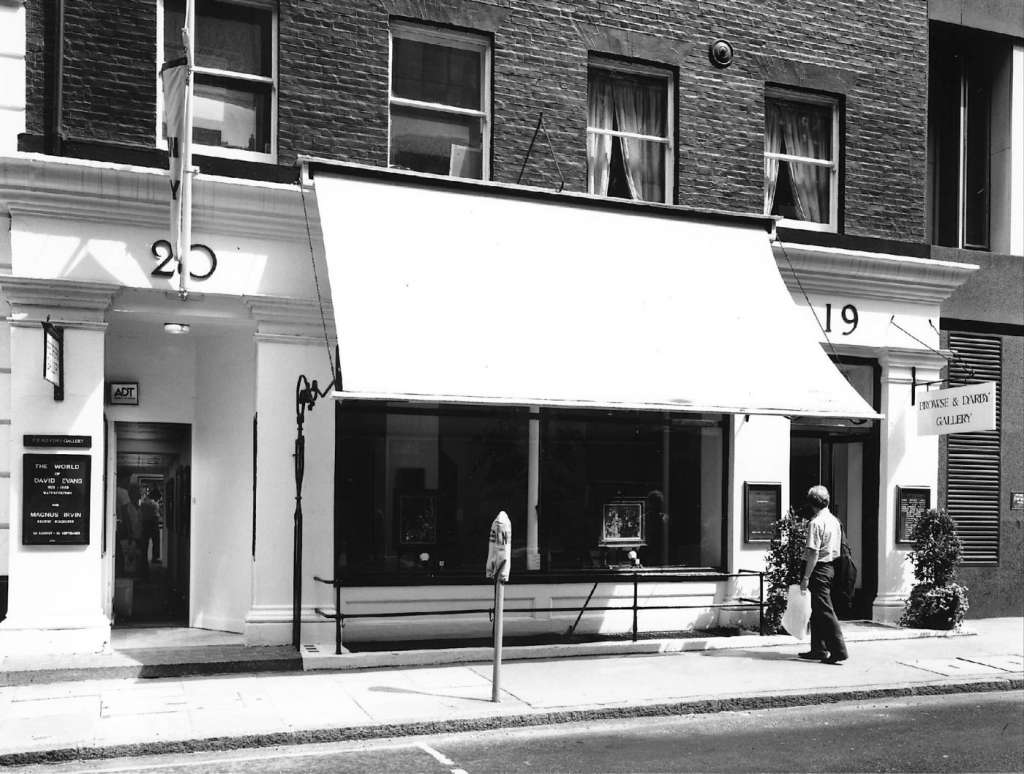LISTING SUCCESS: Historic art gallery saved from demolition
Listed status will now mean plans to demolish the building will require rethink. The gallery was a champion of contemporary art in the 1930s, at a time when Mayfair established itself as an important hub for independent art galleries and art trading in Britain
28th April 2023
SAVE Britain’s Heritage is delighted to report that 19-20 Cork Street in the heart of London’s historic contemporary art district has been granted grade II listing protection. The decision published this month comes in the wake of plans to demolish the 19th century building for a new and much larger office building.
SAVE submitted detailed evidence in support of the emergency listing application in November 2022, along with a strong objection to the demolition plans currently lodged with Westminster City Council by the building’s owner.
Our listing submission set out evidence on the important architectural and historic significance of the building, and its key role in the shaping of Cork Street as a centre for exhibiting and trading avant-garde modern art in the 20th century. Strong support for listing also came from The Georgian Group and The Victorian Society.
As the longest continuously occupied art gallery in Cork Street, 19-20 Cork Street is an unusual survivor in the area which was until the late 20th century known for its many independent art galleries. With many of these galleries closing or relocating elsewhere, much of historic Cork Street has since been lost to new office and residential development.
Today, the gallery at 19-20 Cork Street still trades under the name Browse & Darby, which specialises in British and French paintings, drawings and sculpture.
Set at the heart of the historic Mayfair Conservation Area, 19-20 Cork Street began life as a purpose-built office premises for finance and assurance Brokers in 1816. Between 1860 and 1900 the building passed into commercial operation and was occupied by a succession of silk importers, tailors and woollen merchants.
However, the most important phase of historic and cultural significance was the building’s conversion to an art gallery in 1926. The Bromhead Gallery opened the first gallery in 1926, being quickly succeeded in 1933 by The Mayor Gallery and latterly the Redfern Gallery and today Browse and Darby.
Historic England cite the influence and association with these galleries as a key reason for listing, as progressive institutions with “distinguished histories as champions of modern art in England” which helped establish Cork Street “as a centre of influence for modern art in England with an international reputation.”
By the 1920s Cork Street was itself rapidly becoming recognised internationally as London’s hub for modern art dealing, with several other galleries significant in the promotion of modern art opening during the decade. Besides 19-20 Cork Street, these included the London Gallery at 28 Cork Street in 1936 and Peggy Guggenheim’s ‘Guggenheim Jeune’ at 30 Cork Street in 1938. The latter hosted the first exhibition of work by leading abstract artist Wassily Kandinsky, firmly establishing Cork Street’s place in world of modern art dissemination and exhibiting.
The Mayor Gallery was a very important pioneer in the promotion of modern painting and sculpture at a time when Britain was seen as isolated from the European artistic mainstream. Ahead of the gallery’s opening in 1933, the interior spaces were re-fitted and redecorated in a modernist style under the supervision of interior decorator Arundell Clarke and New Zealand architect Brian O’Rorke.
O’Rorke and Clark’s reworking of the gallery space was simple but modern, deploying false ceilings to conceal indirect lighting to create brightly lit gallery spaces, combined with white painted plywood sheets fitted to the walls upon which works of art would be displayed. This approach was widely praised at the time, and has since become “the norm for the exhibition of modern art works” according to Historic England.
ENDS
Note to editors
1. For more information contact Ben Dewfield-Oakley, conservation officer at SAVE Britain’s Heritage – ben.dewfieldoakley@savebritainsheritage.org / 020 7253 3500
2. See the full listing entry and history of 19-20 Cork Street HERE
3. See the Survey of London entry on the Cork Street and Savile Row Area HERE
4. SAVE Britain’s Heritage is an independent voice in conservation that fights for threatened historic buildings and sustainable reuses. We stand apart from other organisations by bringing together architects, engineers, planners and investors to offer viable alternative proposals. Where necessary, and with expert advice, we take legal action to prevent major and needless losses



